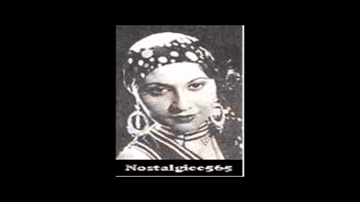Sadhona Bose
Artist Info
Bio: <p>Granddaughter of Brahmakesari Keshab Chandra Sen, Sadhona was born in a prosperous Brahmo family and received education as was common with Brahmo girls of those days. Her father was Saral Chandra Sen and she was the second of his three daughters. Her elder sister Binita was married into a royal family of Chittagong (now Bangladesh)and settled to household life, while the youngest Nilina pursued a career in Indian Classical music and earned herself a position of eminence and was known in record circles as Naina Devi. Sadhona married Madhu Bose, film maker working in Bengal, British India, at a young age, and joined the Calcutta Art Players, a theatrical company owned by husband Modhu Bose and took part as heroine in the plays produced by the unit. Later on Sadhona joined films and played Marjina in Alibaba (1937), made in Bengali under the banner of Bharatlakshmi Pictures. This film was a runaway hit and is remembered well by film enthusiasts. Modhu Bose had earlier directed a number of films but he tasted real success with Alibaba. For Sadhona this film meant a permanent place in the history of Bengali films. This was followed with Abhinoy (Bengali-1938), another major success for the couple. They migrated to Bombay and again created history with the immensely popular Kumkum (1940), made in two languages, Hindi and Bengali and thereafter went on to create the first triple version (English, Bengali, Hindi) film of India, Rajnartaki (1941). Sadhona did come back to Calcutta for a double version Bengali movie Meenakshi (1942)with the handsome Jyoti Prakash as the hero. Going back to Bombay soon after the completion of this film where she starred in major films like Shankar Parvati, Vishkanya, Paigham and others and firmly established herself as a heroine in her own right without the backing of husband Modhu Bose. In fact they had fallen quite apart by the mid forties and most unfortunately Sadhona started living much too abandoned a life heavily engaged in drinks,pa
Born: April 20, 1914 in Calcutta, Bengal Presidency, British India
